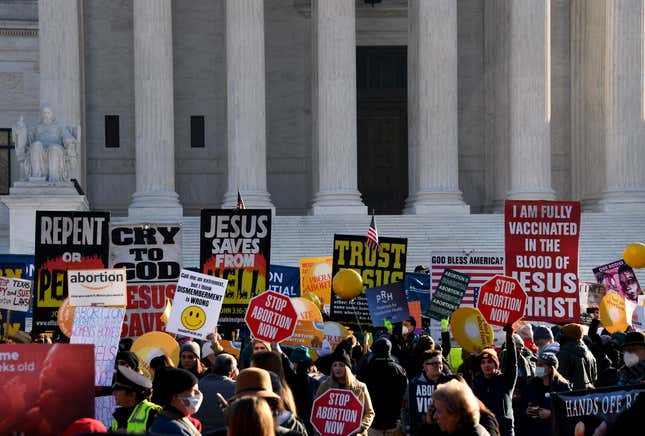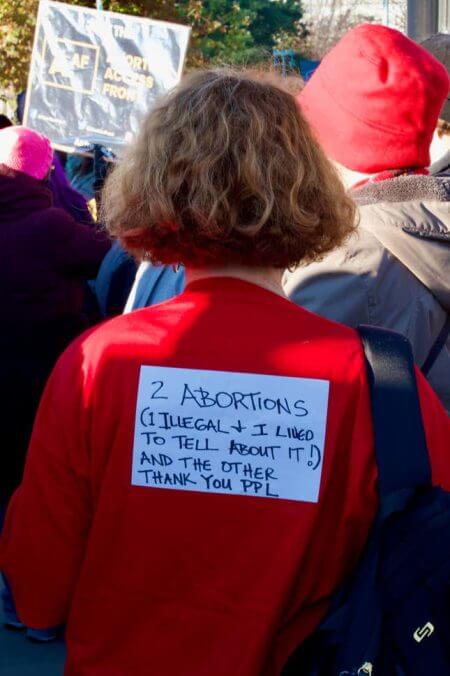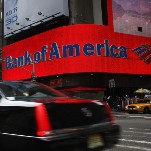Thousands Crowd in Front of Supreme Court to Watch the Gutting of Abortion Rights
The case before the Supreme Court could spell the end of legal abortion, leaving some in glee.
AbortionPolitics
Photo: OLIVIER DOULIERY/AFP
FROM WASHINGTON, D.C. — On Wednesday, thousands of activists gathered in front of the Supreme Court in Washington, D.C., eventually forcing police to close off part of First Street NE to accommodate the crowds. The sides had the predictable war of signage. But like many things in the fight for abortion rights, the pro-choice activists were out maneuvered by antis.
About two dozen anti-abortion protesters were ready before 8 a.m., armed with massive wooden poles holding four-foot-tall signs over the heads of the growing pro-choice crowd. The protesters positioned themselves sign-to-sign just past the set of bollards acting as an informal barrier between the pro-abortion activist starting to gather hours before oral arguments and the sidewalk. The group of anti-abortion protesters had an exceptionally effective audio system that blasted a rotating cast of people calling pro-abortion activists “whores” and “jezebels” and asking “why don’t we abort you.”
The signs were largely graphic and medically inaccurate. ABORTION IS MURDER with bloody handprints adorned one large sign. Another invited the reader to ASK ME WHY YOU DESERVE HELL while another had what was supposed to be a deteriorating fetal skull over a petri dish (maybe a jar?) with the words ABORTION IS DOMESTIC VIOLENCE. This was all only on the side of the Supreme Court steps where the pro-abortion rally would take place. Between the loud sound system telling me I was a murderer and the growing crowds, it led to a feeling of claustrophobia as I made way through the crowd.
This was all hours before the nine justices of the Supreme Court would meet to decide if Dobbs v. Jackson Women’s Health Clinic was worth upending a half-century of legal precedent. Mississippi asked the highest court to consider its 15-week abortion ban, but the question before the Supreme Court is more broad than just the Magnolia State. The Supreme Court considered the legality of all pre-viability abortion bans in America. Science has generally deemed fetuses to be viable around 22-24 weeks after the last menstrual cycle. Slowly, the use of viability as how to mark when the state can or cannot enact abortion restrictions has been slashed away, turning to the nebulous legal concepts of “undue burden” and “substantial obstacle,” with the justices today indicting an eagerness to move past viability.

Francine Tansey, 71, came all the way from Los Angeles. It was the second time in recent years she’d come to D.C. to be a part of a social justice protest. Most recently, she’d been arrested at the Senate building during the Kavanaugh hearings. Those hearings upset her, but attending Dobbs was essential to who she is.
-

-

-

-

-

-

-

-

-

-

-

-

-

-

-

-

-

-

-

-

-

-

-

-

-

-

-

-

-

-

-

-

-

-

-

-

-

-

-

-








































